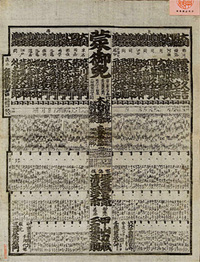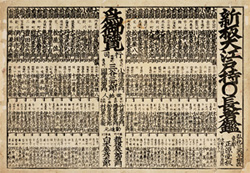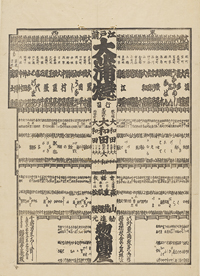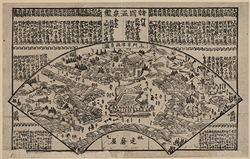Great-Edo Entertainment
Kabuki Special / Grand Sumo Special / Rakugo SpecialThe Flowering of the Ranking Chart (Banzuke) Culture
during the Spring of 1860 (Ansei 7)]
(Ansei Sichinen Haru Ekoin Honbasho Banzuke)
1860 (Ansei 7)
Banzuke (ranking chart) lists the rankings of professional wrestlers based on their tournament results. Originally, banzuke was not printed on paper but was written on a wooden board at each tournament. When the kanjin zumō became established as a system of tournaments, however, such lists were also printed on paper in order to allow a greater number of people to learn both the names of the wrestlers and their rankings. The wood-block printing technologies played a role in the diffusion of such information. Different banzuke called "ranking standings" (mitate banzuke) were developed based on the original sumō banzuke principle during the Edo period. The most well-known of these rankings were those that ranked the rich (chōjya banzuke). Other mitate banzuke rankings of the period covered diverse topics, including the size of damages of disasters such as earthquake, fire, flooding, etc., scenic sites and hot springs, famous restaurants in Edo, popular comedians, renowned scholars, and so on. The banzuke was one of many cultures that originated from the tradition of Ōzumō.
* To view more explanation, please click the each image.





